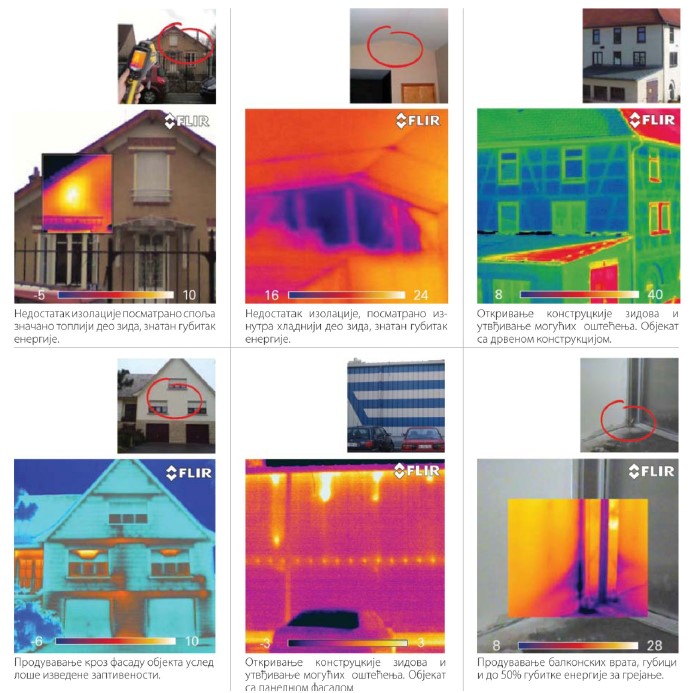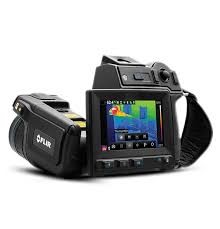Thermal imaging - Quality assessment
Thermal imaging has multiple applications in building industry, and most often it includes:
-
examination of building envelope with the purpose of determining heat gains/loses, which practically means that we can determine the state of thermal insulating layers (their characteristics, defects or even the lack of the entire layer) in walls, roofs, overhangs and other elements of thermal envelope which are directly in contact with surrounding;
-
locating thermal bridges, quantification of their size, geometry and level of thermal loses;
-
determining the zones of air infiltration through the building envelope (this is most often combined with testing airtightness, using Blower door testing);
-
determining damp zones and source of dampness;
If we shift our focus from the building envelope to other building elements and installed technical systems, this method can also be used for examining:
-
electrical installation (zones of overheating contacts and cables, location of malfunctions);
-
distribution of central heating pipes, as well as floor and wall heating;
-
position of piping in the walls;
-
location of malfunctions in the pipes.
More information in the monograph Seeing Energy is available here
The most common applications are illustrated below:

Thermal imaging is done according to standard SRPS EN 13187:2008, using the modern cameras of prominent American manufacturer FLIR, as well as dedicated software packages.

Thermal imaging is performed in the appropriate weather conditions:
-
temperature difference between outdoor and indoor space is min. 10°C,
-
wind below ≤2m/s,
-
no precipitation (rain or snow) min. 24h before imaging,
-
no direct Sun radiation min. 12h before imaging.
Thermal imaging is not applicable for diagnosing constructions which have ventilated layers, as well as those below ground.
Pitched roofs are examined from the inner side, due to inability to detect defects from the outside due to large influence of reflections.